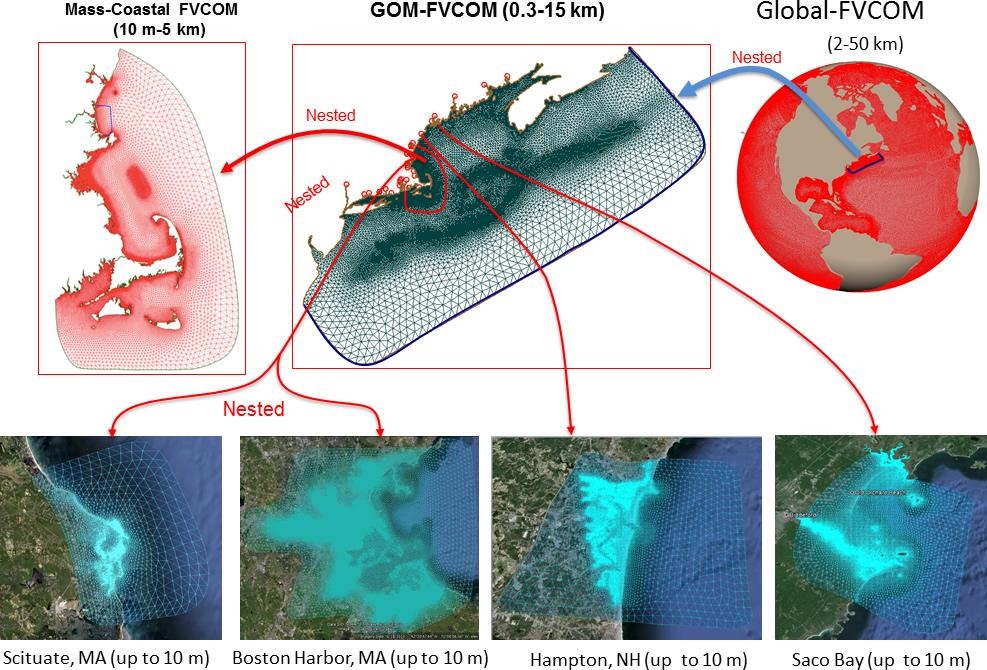We will expand an existing regional model to include the carbonate chemistry that determines coastal acidification. The model will allow predictions and forecasts of acidification conditions to help in developing management plans for water quality and marine resources.
Why We Care
Waters of the northeastern U.S. are among the most vulnerable to ocean and coastal acidification (OCA). OCA threatens the livelihoods of Northeast coastal communities through current and potential impacts on commercially and culturally important species and ecosystems. Successful adaptation and mitigation options to address these impacts—including actions by municipal, state, and federal water quality managers, marine resource managers, coastal zone managers, fishers, and the aquaculture industry—depend strongly on the availability of real-time predictions and short-term forecasts to inform decision-making. Without a way to predict OCA conditions in the dynamic coastal system, industry members, resource managers, and coastal policy makers have little insight into how to plan, respond, and adapt to OCA.
What We Are Doing
In collaboration with the NOAA Ocean Acidification Program, we have funded a project led by the Northeastern Regional Association of Coastal Ocean Observing Systems (NERACOOS) that will expand the existing Northeast Coastal Ocean Forecast System (NECOFS) to include the carbonate chemistry that determines coastal acidification. The project team will combine advanced circulation, hydrological, and ecological models. The team will also organize workshops and focus groups to determine information needs, decision scenarios, modeling priorities, and options for delivering actionable information for three specific user groups: (1) water quality managers and monitoring systems, (2) oyster growers, and (3) the wild harvest shellfishing industry.
Benefits of Our Work
With carbonate chemistry added to NECOFS, it will be possible to predict acidification conditions through short-term forecasts and longer term predictions of climate effects. An ability to project acidification conditions throughout the region will allow managers to develop plans for coastal water quality and marine resources. The project includes an advisory committee with representation from the Northeast Coastal Acidification Network, EPA, NOAA Fisheries/Northeast Fisheries Science Center, Maine Center for Coastal Fisheries, Maine Bureau of Water Quality, New Hampshire Department of Environmental Services, Massachusetts Lobstermen’s Association, Island Creek Oysters (MA), Fishers Island Oyster Farm, Inc. (NY), and Island Institute (ME).

